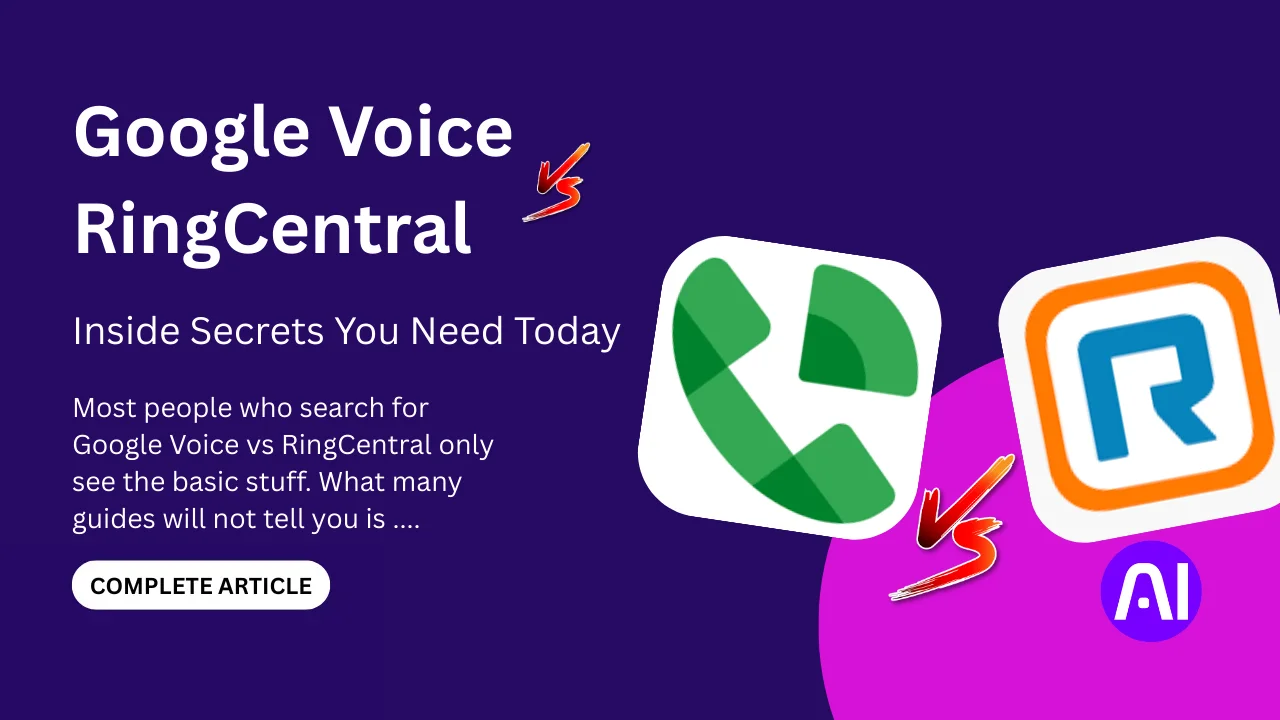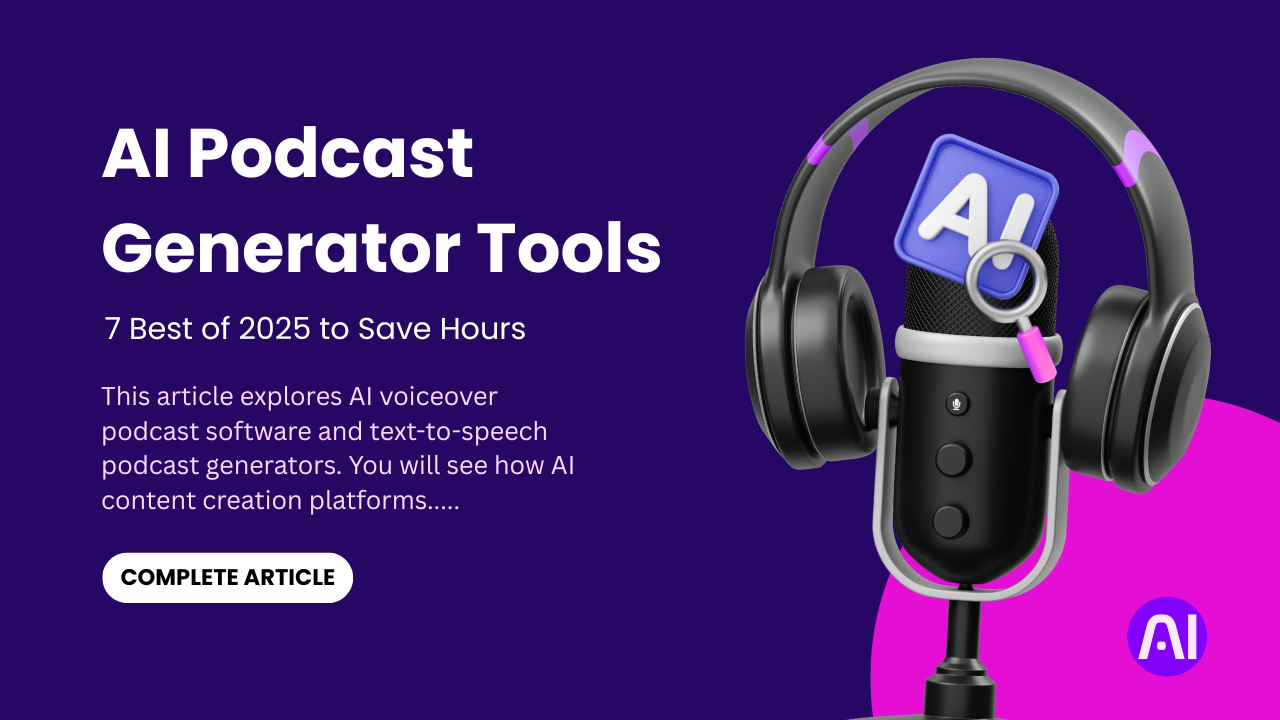The world of ed-tech for language learning is changing fast. Whether you’re just starting out or trying to become fluent, new tools make learning easier and more fun. In 2025, students and teachers are using smart apps and platforms every day.
This guide shows how technology is transforming language education. It covers powerful tools like AI language tutors, interactive language platforms, and NLP voice recognition. These tools are not just trends. They are helping people speak new languages faster and with more confidence.
This article will guide you through the most powerful language learning apps and ed-tech tools revolutionizing language learning in 2025. You’ll discover how technology is transforming language education through smart apps, real-time feedback, and fun, game-like practice. We’ll show you what works, what’s trending, and why these tools matter more now than ever before.
AI Language Tutors Revolutionizing Personalized Learning
The power of ed-tech for language learning has reached a new level in 2025. One of the biggest changes is the rise of AI language tutors. These smart tools help you learn faster and better. They listen, adjust, and respond based on how you learn.
These intelligent tutoring systems are not just apps. They work like real teachers by giving you custom lessons and correcting mistakes in real time. You also get to practice your skills through real conversations. This kind of feedback is fast, clear, and always helpful.
A study on arXiv shows that large language models (LLMs) can act as smart tutors. These LLM tutors are trained to understand grammar, meaning, and tone. They don’t just test your memory. They guide you step by step through the learning process. This makes the whole journey smooth and easy for learners at all levels.
How AI Tutors Give Personal Help
- They track your progress
- They spot what you don’t understand
- They offer tips to help you remember better
- They talk with you like a human would
- They change the lesson style if you get stuck
This is what makes AI language tutors so different. They feel more like partners than machines. You are not just tapping flashcards. You are talking, thinking, and growing with real support.
Some of the best digital language education tools now use AI to power their tutor services. These tools do more than teach. They adapt to your goals, your speed, and your way of speaking. That means no two learners get the same lesson. Everything is built around what works best for you.
In 2025, this tech is not just for experts. Even kids and beginners can use these tools with ease. They get fast help, clear tips, and fun ways to practice.
AI is no longer the future. It is the teacher. And it is making language learning apps and platforms smarter every day.
Interactive Language Platforms and Immersive AR/VR Experiences
A big reason why ed-tech for language learning is booming in 2025 is the rise of interactive language platforms. These platforms turn boring lessons into exciting games and real-life tasks. You are no longer just reading or listening. You are living the language.
Immersive learning tools now use AR and VR to give real-world practice. Imagine walking through a virtual street market in Paris. Chat with a shopkeeper in Spanish or order food in Japanese at a VR sushi bar. It feels like you are really there, even though you are learning from your own room.
What Makes AR/VR So Special
- You can practice in real scenes
- You hear and speak in real time
- You feel like part of the story
- You learn by doing, not just memorizing
These tools help your brain remember faster. That’s because you are using more senses. You see it, hear it, speak it, and react to it. This is not just reading or listening. It’s learning by living.
Apps and tools that use AR/VR language education are growing fast. You can use your phone, tablet, or a headset. Some apps let you scan things with your camera. You point your phone at a chair and see the word for “chair” in the language you are learning. This makes vocabulary learning super easy and fun.
Real Conversations with Virtual People
In some apps, you meet and talk to virtual people. These people ask questions. They listen and reply. If you say something wrong, they help fix it. You can repeat the scene as many times as you like. This builds your confidence.
You might play the role of a traveler, a chef, or even a tour guide. The setting changes with your story. You speak more naturally, not like a textbook robot. This is where interactive language platforms really shine. They make learning feel like play.
How This Links to Ed-Tech Growth
All of this is part of a bigger shift. Ed-tech for language learning is not just about lessons and quizzes anymore. It is about full experiences. It’s about giving you the feeling of being in a real place and speaking like a local.
Teachers are also using these tools in classrooms. They guide students through immersive learning scenes. This helps everyone stay focused and enjoy learning. Even shy students speak up more in these virtual worlds.
Some top digital language education tools now blend AI with AR or VR. This mix gives the best of both worlds. You get smart feedback and real-world practice. The result is faster learning and better speaking skills.
In 2025, these tools are easier to get than ever. You don’t need fancy gear. A phone and internet are often enough. And the tech keeps getting better.
With AR/VR and smart platforms, language learning apps are no longer just apps. They are living worlds. They pull you in and help you grow. Whether you want to travel, study, or work abroad, these tools prepare you for real-life talk.
The future of learning is not in books. It’s in virtual cafés, digital streets, and AR classrooms. And it is already here.
Microlearning Language Learning Apps That Keep You Hooked
One of the biggest ways ed-tech for language learning helps people today is through mobile apps. These apps do not give long boring lessons. They break learning into small and fun parts. This is called microlearning. You learn a little at a time, but you keep going every day.
Apps like Duolingo, Memrise, and Babbel use this method. You only need 5 to 10 minutes a day. But those minutes matter. They add up fast. You stay active and learn without feeling tired.
Why Microlearning Works So Well
- Lessons are short and simple
- You can learn anytime, anywhere
- It fits into busy lives
- It builds daily habits
- You don’t feel stressed
Mobile-first learning apps are built for phones. They load fast and look good on small screens. You can use them on a bus, during lunch, or right before bed. They send friendly reminders too. If you miss a day, they nudge you back. This helps you stay on track.
How Gamification Makes You Want to Learn
These apps turn learning into a game. You earn points, collect badges, and unlock new levels. Some even let you compete with your friends. This is called gamification in language learning. It makes boring tasks fun. You forget you’re studying.
Some apps let you build streaks. If you study for 10 days in a row, you get a bonus. If you answer fast, you earn speed points. You can dress up your avatar, win coins, or join leaderboards. All of this keeps you coming back.
Research shows that gamified features boost motivation. You want to do better. You feel proud of your progress. And because the lessons are small, it’s easy to win each day.
Apps That Focus on Speaking Too
Newer apps are not just about reading and tapping. They now help with speaking and listening. You talk into your phone. The app checks your pronunciation. It shows you how to improve. Some use NLP voice recognition for this. It gives fast and clear feedback.
You also listen to short phrases and repeat them. Over time, this builds your accent and fluency. These tools feel personal. They give you just what you need.
Many digital language education tools use AI to track your growth. If you get something wrong often, the app shows it more. If you are strong in one area, it moves you forward. This mix of smart tech and bite-size content is powerful.
What the Trends Show
Big names in tech like Duolingo and Quizlet are investing more in micro-learning modules and gamified updates. Even schools are adding these tools to help students practice at home. Kids love them. Adults do too.
People no longer want long videos or thick books. They want fast lessons that feel like games. They want to learn in minutes, not hours. And they want to smile while doing it.
So in 2025, the heart of ed-tech for language learning beats inside your pocket. It is fun, fast, and always with you. These language learning apps keep you hooked with short lessons, games, and real wins. That is why they work. And that is why more people are using them every day.
Voice Recognition & NLP Tools That Sharpen Your Pronunciation
In 2025, ed-tech for language learning is smarter than ever. One of the biggest reasons is the rise of NLP voice recognition and speech recognition tools. These tools help you speak better and sound more natural.
You do not need a tutor in the room. You just need your phone or laptop. These tools listen to your voice. They compare it to how native speakers talk. Then they give you quick tips to fix your accent, tone, or word stress.
How NLP Tools Help Learners
- They hear your voice in real time
- They check if you say the words right
- They show where you made a mistake
- They let you repeat until it sounds better
This is called natural language processing for language learners. This smart system understands how people really speak. It goes beyond matching sounds. It also picks up on grammar, rhythm, and meaning.
A trend report shows that voice tools are a must-have in top learning apps. Students love them because they give instant help. Teachers use them too. These tools help check pronunciation in class without wasting time.
Some apps even track your speech over time. You can see how much you have improved. This makes you feel proud and want to keep going.
Speaking Practice Anywhere
You do not need to be in a class or on a call. These tools let you practice alone. You can talk to the app like it’s a person. You get private feedback with no stress. That is why many shy learners use speech recognition tools every day.
New updates also let you practice full sentences and even short talks. The app checks your flow and grammar too. This feels more real and helps you prepare for real-life chats.
Why This Matters for Ed-Tech
High-end digital language education tools now include speech tech by default. They mix AI language tutors with NLP voice recognition. This gives full support. You read, listen, speak, and get feedback all in one place.
This shows how far ed-tech for language learning has come. It is no longer about just learning words. It is about sounding right, feeling confident, and speaking like a native.
In short, if you want to speak better, these tools are your best friend. They are fast, smart, and always ready to help.
Ed‑Tech Tools Revolutionizing Language Learning in 2025
In 2025, ed‑tech tools revolutionizing language learning in 2025 are shaping a new era in how people learn languages. The growth is driven by four big trends. These trends make learning more personal, interactive, and fun. We see AI tutors, microlearning, AR/VR worlds, speech tools, and social tools all working together.
AI Tutors Expand Fast
Duolingo used generative AI to add 148 new language courses in under a year. This move doubled its course library and made it possible to reach more learners globally. This is real proof of how generative AI in language education can scale learning fast and maintain quality.
AR/VR and Microlearning
Platforms now blend microlearning modules, gamification, and immersive experiences. You can now study a bite-size lesson on your phone, then step into an AR cafe in Paris to practice speaking. These tools make learning feel real and keep you motivated.
Speech Recognition and NLP
Real-time NLP voice recognition is now core to high-end language tools. Learners speak, get instant feedback, and adjust. This helps with pronunciation, accent, and confidence. You practice more naturally and learn faster.
Social and Community Features
Tools now include social sharing, group challenges, and AI-powered group lessons. You can practice with peers, get feedback from native speakers, or join live AI‑led sessions. This makes learning social and consistent.
Why These Tools Matter
- Personal learning at scale: AI tutors adapt to your strength and weakness.
- Fun and engaging: Microlearning and gamified steps keep you hooked.
- Real practice: AR/VR and NLP let you speak in real settings.
- Flexible access: Learning on a phone or headset fits any schedule.
- Motivation: Social features and streaks help you keep going.
Top Innovations to Watch
Trend What It Means for You AI‑written Courses New languages fast and affordable Microlearning Apps Lessons you can do daily in minutes AR/VR Experiences Practice in real-world scenes from home Speech Tools Instant help on pronunciation Social Tools Connect with learners worldwide
These five trends define ed‑tech tools revolutionizing language learning in 2025. They transform apps into immersive teachers. They bring AI, speech tech, and community into one smart place.
As news shows with Duolingo’s AI push and apps like Qlango rising in popularity, the landscape is changing rapidly. Qlango now offers lifetime access to lessons in over 50 languages for one low price, with gamified, flexible tools and built-in pronunciation help.
You will find that the ed‑tech for language learning in 2025 gives you choice, speed, and fun. You will learn smarter, speak clearer, and connect with others across the world.
Choosing Digital Language Education Tools That Work for You
With so many apps and tools out there, it can feel hard to choose the right one. But if you know what to look for, it gets much easier. The best ed‑tech for language learning includes language learning apps with AI tutors and smart features. You also want strong and simple digital language education tools that fit your goals.
Beginners Need Simple, Guided Tools
If you are just starting, look for tools with easy steps and clear help. Choose apps that:
- Teach words and grammar in small chunks
- Offer speech feedback to build confidence
- Use pictures, games, and rewards to keep you learning
- Include short daily lessons with gentle reminders
These features are common in AI-powered learning platforms that know how to guide new users. You do not need to do it all at once. You just need to keep going each day.
Advanced Learners Need Challenge and Feedback
If you already speak a little, you will want more. Try tools that:
- Offer full conversations and smart replies
- Include role-play or AR/VR lessons
- Give detailed speech correction
- Track your growth and adjust the lessons
These interactive language education tools help you grow fast. They do not repeat old lessons. They test your real skills and help you reach fluency.
Features That Matter for All Levels
No matter your level, look for tools that are:
- Mobile-friendly: Easy to use on your phone
- Adaptive: Adjust lessons to your pace
- Gamified: Add fun and rewards
- Voice-enabled: Check your speaking in real time
- Goal-based: Track progress and set reminders
These are signs of adaptive ed‑tech tools that know how to work with each person. They save time and keep you going. You will learn more in less time.
What Makes the Best Tools Stand Out
The best ed-tech for language learning is not always the flashiest. It is the one that fits your schedule, level, and style. Some people learn best by speaking. Others need to read or play games. Find a tool that matches how you think.
Also, check if the app has a free trial or low-cost start. Test it first. See if the lessons feel clear and fun. Make sure you get quick help and real results.
Choosing the right digital language education tools helps you move forward. You save time. You enjoy the process. And you stay motivated to keep learning. That is how real progress happens.
Case Studies: How Real Learners Benefit from Ed‑Tech
Here are real stories of learners who used ed‑tech for language learning tools to reach new milestones. Each tale shows how AI tutors, microlearning, speech tools, and gamified apps made a real difference.
Case Study 1: Julia from Brazil
Julia wanted to improve her English during the pandemic. She used Duolingo every day. Its AI-powered tools like Roleplay and Explain My Answer helped her practice speaking and grammar clearly.
User: Julia, beginner English learner
Challenge: No speaking confidence or fluency in English
Solution: Daily use of Duolingo’s AI features that adapt lessons and offer feedback
Takeaway: Julia gained confidence and became bilingual enough to work as a customer support agent
Case Study 2: Honeymoon in Italy with Duolingo
A learner planned a trip to Italy and started using Duolingo for ten months. He spent about 30 minutes a day. During his trip he could read signs, order meals, and chat with locals.
User: Adult traveler learning Italian before a honeymoon trip
Challenge: Very limited Italian skills for the trip
Solution: Consistent daily use of a gamified app with points, reminders, and small lessons
Takeaway: He could interact with locals and enjoy his trip more thanks to language confidence
Case Study 3: Malaysian Students and Duolingo (Research-Based)
A study at the National University of Malaysia found that students improved vocabulary quickly using Duolingo. The app was especially helpful for beginners learning French.
User: Malaysian university students learning French
Challenge: Learning enough vocabulary in a new language class
Solution: Regular use of Duolingo’s microlearning and gamification
Takeaway: The app proved well suited for beginners and boosted vocabulary effectively
These stories show how ed‑tech for language learning can help real people. Whether through AI feedback, daily app routines, or smart lesson design, learners built real skills. AI tutors, bite‑size lessons, gamified practice, and speech feedback all make progress clear and fun. You can learn at your own pace and see results.
Next Steps: How Beginners and Pros Can Start Using Ed‑Tech Today
It is easier than ever to begin your language journey. Whether you are new or already skilled, ed‑tech for language learning offers smart tools that fit your needs. The key is to start simple and stay consistent. You do not need to do everything at once. Just take small steps every day.
Start with the Right App
If you are a beginner, try Duolingo or Qlango. These language learning apps use short lessons, games, and reminders to help you stay on track. They are fun and easy to use. For more speaking practice, try apps like Elsa Speak or HelloTalk. These tools focus on real speech and clear feedback.
If you already know the basics, choose tools with more features. Look for AI tutors or interactive language platforms like Babbel or Mondly. These give deeper lessons and help you build real-world skills.
Make Microlearning a Daily Habit
You do not need an hour a day. Just 10 to 15 minutes is enough. Set a daily reminder. Finish one short lesson. Then stop. This builds a strong habit. Over time, you will remember more and feel more confident.
Most digital language education tools use microlearning modules. These small parts are easy to follow. You can finish them during a break or while traveling. This way, learning fits into your day without stress.
Combine Tools for Better Results
You do not need to use just one app. Try mixing two or three. For example:
- Use Duolingo for basic words and grammar
- Use Elsa Speak to fix your pronunciation
- Try an AR or VR app for real-world practice
This gives you a full learning plan. You get reading, speaking, and real-time feedback all in one flow. You also stay more interested and have more fun.
Keep Track and Stay Motivated
Many tools now show your progress with scores, charts, and streaks. Use this to stay excited. Share your wins with friends. Join group challenges or practice with others. This builds a learning community and makes the journey feel easier.
The best ed-tech for language learning is the one you enjoy and use daily. It should help you feel smart, not stressed. Look for AI tutors, fun lessons, and smart feedback. These tools were built to help you grow.
In 2025, it is time to embrace ed-tech tools revolutionizing language learning in 2025. Start small, keep going, and enjoy every step. Language learning is no longer a struggle. With the right tech, it becomes part of your life.
Conclusion
Technology is leading a new chapter in learning. In 2025 and beyond, we see how technology is transforming language education in everyday lives. AI tutors grow smarter. Micro‑learning and gamified apps make lessons fun. AR/VR worlds let you speak in real places from your phone. Voice‑recognition tools fix pronunciation on the spot. Social integrations connect you with peers or native speakers for real practice.
For beginners, it’s easy to start with bite‑size lessons and earn badges. For pros, tech tools offer deeper conversations, role‑play, and feedback you can hear and feel. In both cases tools adapt to your pace, focus on what you need, and adjust as you improve. You no longer follow one path. You follow your path, guided by tech that learns with you.
To stay current, experiment with new tools. Test AI tutors, try speech tools, and explore AR scenes. Pick what feels right, then stick with it. Keep small habits daily. Track your progress. Soon you will see real growth.
Stay updated on AI trends! For more expert tips and the latest breakthroughs, follow AI Ashes Blog. Dive deeper into machine learning, data science, and cutting‑edge AI research.
Check out their recent article Learning Modalities EXPLAINED | What Schools Won’t Tell You. It explains how AI and different ways of learning can help you study smarter and faster.
Whether you are just starting or pushing toward fluency, keep exploring, keep practicing, and embrace ed‑tech tools revolutionizing language learning in 2025.
FAQs
Q1: What is ed‑tech for language learning?
It means using smart tools and apps to learn languages in new ways. Apps, AI tutors, speech tools, and interactive platforms help you learn faster, speak better, and stay motivated. These digital language education tools make learning fun and easy.
Q2: Can beginners really learn with language learning apps?
Yes, beginners can learn well. Apps like Duolingo and Qlango use AI language tutors, micro‑learning, and fun games. They help build skills with short lessons and real feedback. Even without classes, anyone can improve daily with these interactive language platforms.
Q3: Do speech recognition tools really help pronunciation?
Yes. Tools with NLP voice recognition listen to your speaking in real time. They compare your voice to native speech and give corrections instantly. That helps you sound more natural and build confidence quickly.
Q4: What is gamification in language learning?
Gamification adds points, badges, streaks, and challenges to learning. It makes lessons feel like games. Language learning apps use this to keep you coming back every day. It turns study into fun and helps build habits.
Q5: Are AR or VR tools helpful for language practice?
Yes they are. Interactive language platforms that use AR/VR let you role‑play in virtual markets or cafes. You speak to virtual characters and practice real conversations. It helps you learn by doing, not just reading.
Q6: Should I combine apps and tools?
Definitely. The best ed‑tech for language learning uses multiple tools. For example use Duolingo for basic words, Elsa or HelloTalk for speaking, and an AR tool for real scenes. This gives you reading, speaking, and feedback in one plan.
Q7: How long should I study daily?
Just 10 to 15 minutes each day is enough. That is the power of micro‑learning modules in digital tools. Short lessons work best for focus and memory. Over time they add up to real progress.
Q8: How do I know which tool fits me best?
Look for tools with AI tutors, speech feedback, microlearning, and mobile access. Beginners need simple guided lessons. Advanced learners need challenge features. Test free versions. Pick the app that feels clear and fun to you. That is how you choose smart digital language education tools.








